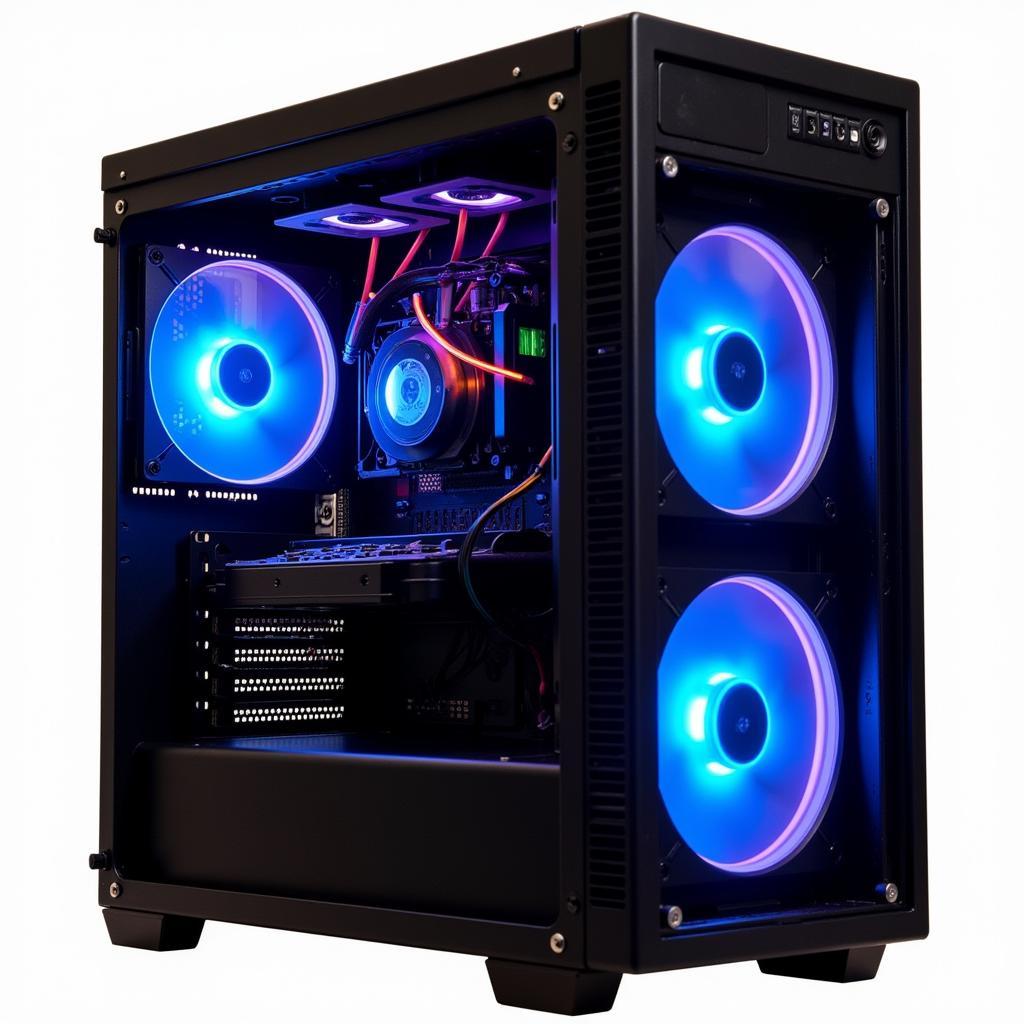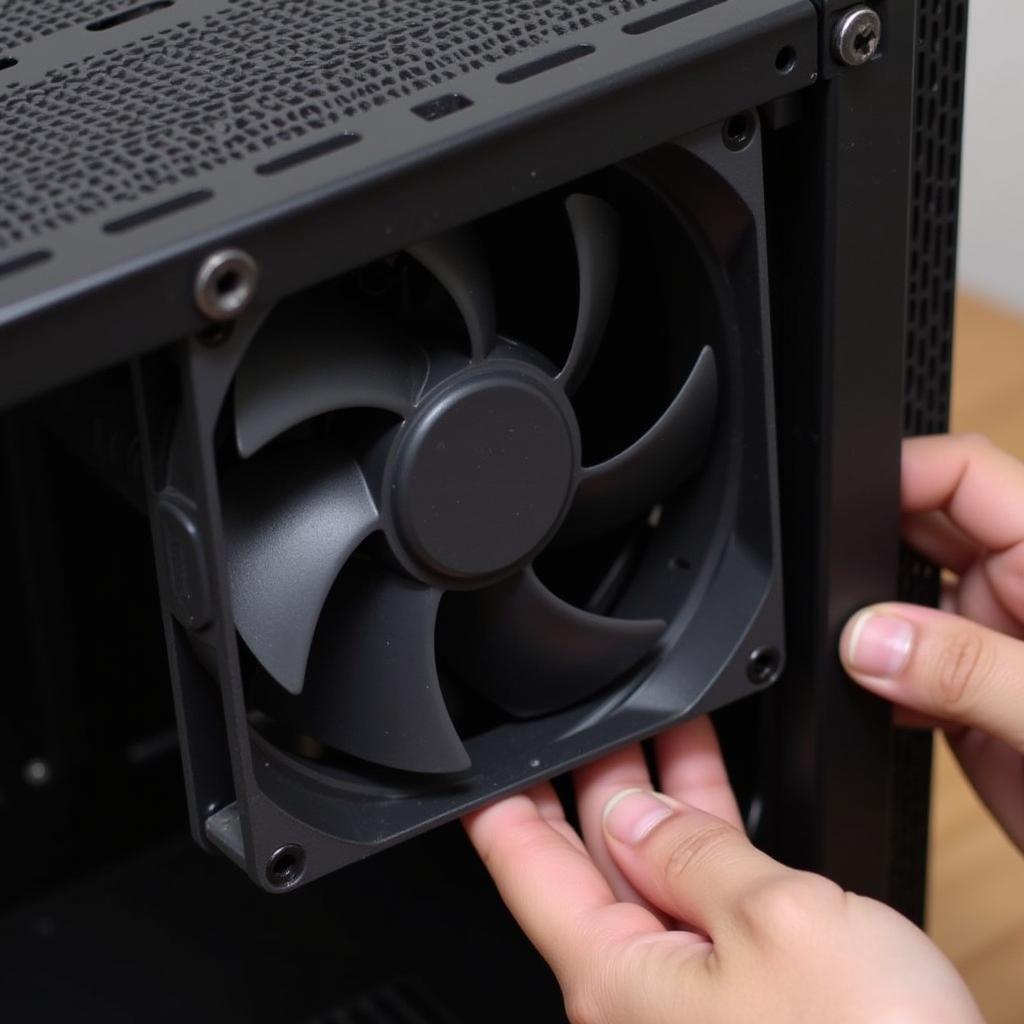If you’re looking to improve your PC’s cooling performance, you’ve probably wondered, “Can my PC have fans on the bottom?” The answer is a resounding yes! Bottom-mounted fans play a crucial role in optimizing airflow within your computer case. They work by drawing cool air from beneath the case and directing it towards heat-generating components like your graphics card and CPU.
The Importance of Bottom Intake Fans
PC cases are designed with specific airflow patterns in mind. Generally, you want to create a system where cool air is drawn in from the front and bottom of the case, while hot air is exhausted out the back and top. Here’s why bottom intake fans are so important:
-
Improved Cooling for GPUs: Graphics cards are notorious for generating heat. By positioning intake fans beneath your GPU, you provide a direct stream of cool air to keep temperatures in check, especially during demanding tasks like gaming or video editing.
-
Dust Reduction: Bottom fans can also help reduce dust buildup inside your case. By creating positive air pressure, they make it harder for dust particles to enter through other openings.
 PC Case with Bottom Intake Fan Setup
PC Case with Bottom Intake Fan Setup
Things to Consider Before Installing Bottom Fans
Before you rush out to buy extra fans, keep these factors in mind:
-
Case Compatibility: Not all PC cases have mounting points for bottom fans. Check your case’s specifications or physically inspect it to see if there are available slots.
-
Fan Size: Most cases accommodate 120mm or 140mm fans on the bottom. Make sure you purchase fans that are compatible with your case’s mounting options.
-
Clearance Issues: Measure the clearance between your case’s bottom panel and the surface it sits on. Ensure there’s enough space for the fans to draw air effectively. If your PC sits directly on the carpet, consider using a stand or placing it on a hard surface.
-
Existing Airflow: Analyze your current fan configuration. If you already have strong front intake fans, adding bottom fans might create turbulent airflow that’s less effective. In some cases, it might be more beneficial to prioritize exhaust fans.
 Installing a PC Case Fan
Installing a PC Case Fan
How to Choose the Right Bottom Fans
Selecting the right fans can significantly impact your cooling setup:
-
Airflow vs. Static Pressure: Fans with high airflow (measured in cubic feet per minute or CFM) are ideal for moving large volumes of air. Fans with high static pressure are better at forcing air through restricted spaces, like those found in radiators or heatsinks. For bottom intake, prioritize airflow.
-
Noise Levels: Consider the noise output of the fans, especially if your PC is in a quiet environment. Look for fans with low decibel ratings or features like noise dampeners.
-
RGB Lighting: If you want to add a touch of visual flair to your build, many fans come equipped with customizable RGB lighting.
Installing Your Bottom Fans
Installing case fans is a relatively straightforward process:
-
Power Down and Unplug: Turn off your PC, unplug it from the wall, and open the case.
-
Locate the Mounting Points: Identify the fan mounting points on the bottom of your case.
-
Connect the Fans: Connect the fan’s power connector to an available fan header on your motherboard or a fan hub.
-
Secure the Fans: Align the fan with the mounting holes and secure it using the provided screws.
-
Cable Management: Neaten up any loose cables to ensure they don’t interfere with airflow.
Conclusion
Adding fans to the bottom of your PC case can provide a noticeable improvement in cooling performance, especially for your GPU. By carefully considering factors like case compatibility, fan size, and airflow dynamics, you can create a balanced cooling solution that keeps your components running cool and extends the lifespan of your system. Remember to monitor your system temperatures after making any changes to your fan configuration to ensure optimal performance.
FAQs
1. Will bottom fans make my PC louder?
Adding more fans can potentially increase noise levels, but choosing fans with low decibel ratings and optimizing fan curves can help minimize any noticeable difference.
2. How many bottom fans do I need?
Most cases can accommodate one or two bottom fans. The optimal number depends on your case’s design, component heat output, and overall cooling needs.
3. Should bottom fans be intake or exhaust?
In most cases, bottom fans should be set as intake to draw cool air in from beneath the case.
4. Can I add bottom fans to a laptop?
Laptops have fixed cooling solutions, and it’s not recommended to modify their internal components.
5. How often should I clean my PC fans?
It’s generally a good idea to clean your PC fans every 3-6 months, or more frequently if you notice excessive dust buildup.
Do you need more help with your PC build? Check out our other helpful articles:
Still, have questions? Contact us!
Phone: 0903426737
Email: fansbongda@gmail.com
Address: Tổ 9, Khu 6, Phường Giếng Đáy, Thành Phố Hạ Long, Giếng Đáy, Hạ Long, Quảng Ninh, Việt Nam
We have a dedicated customer support team available 24/7 to assist you.


